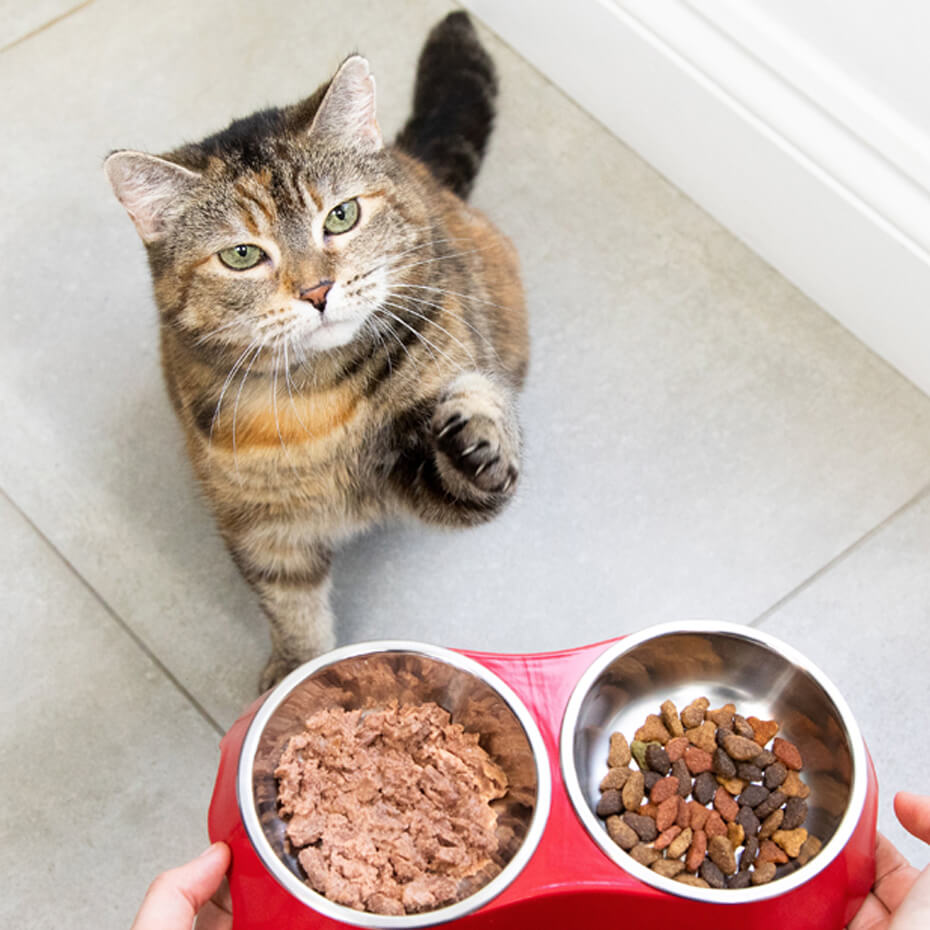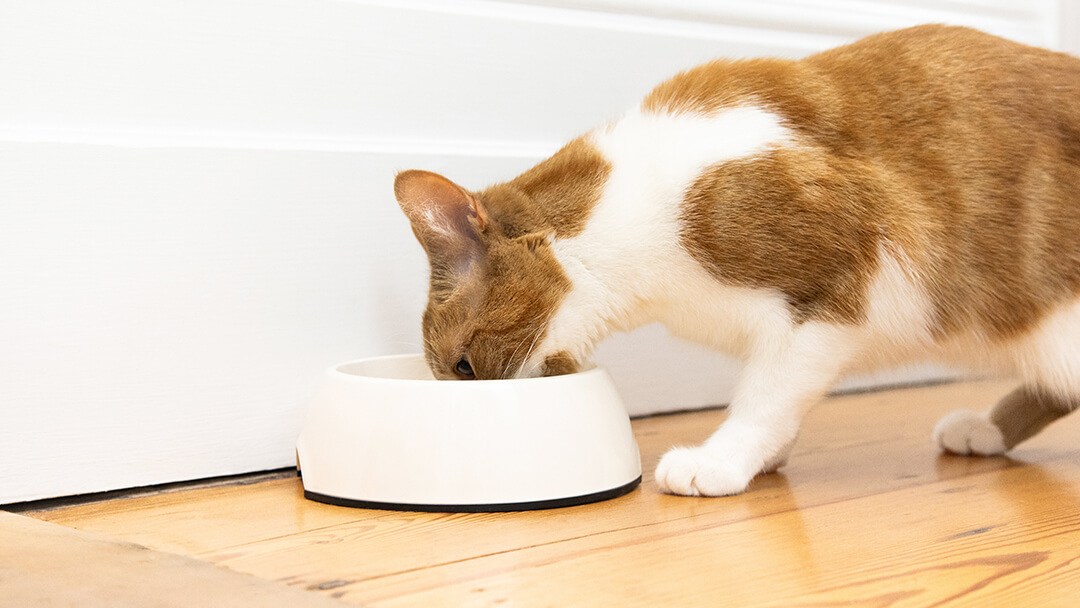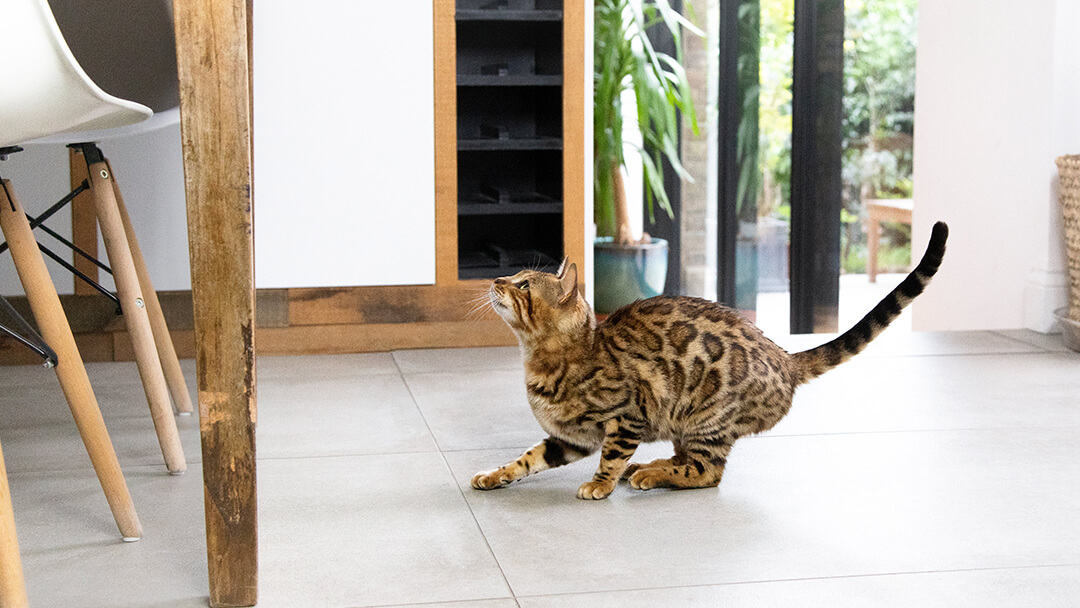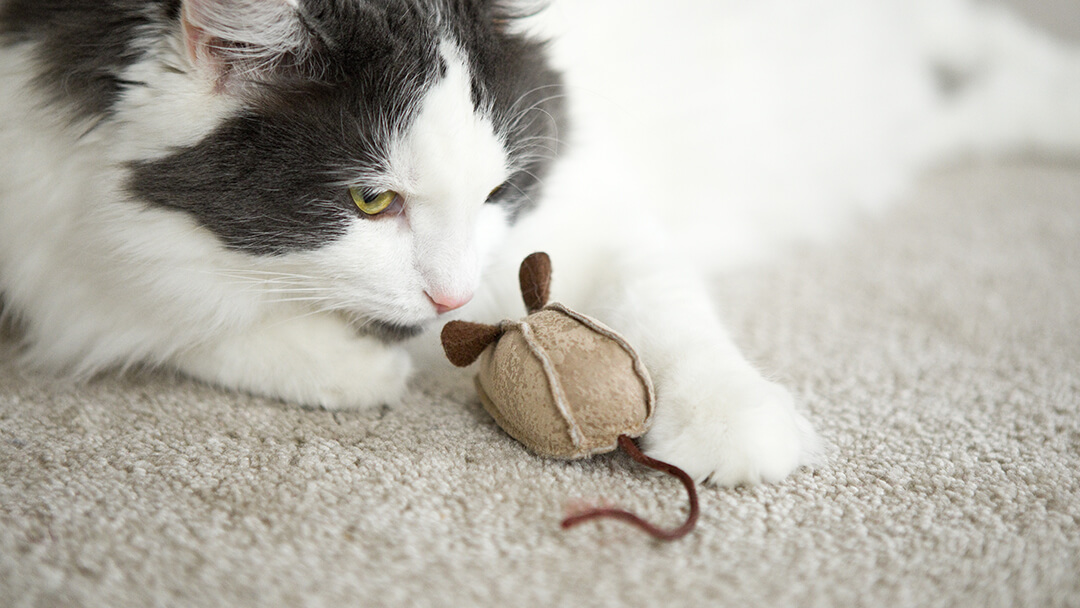
What is Your Cat Trying to Tell You?
Even when cats are silent, they’re always giving off signals of their current moods. Is your cat feeling playful? Does she want to be approached? Is she fearful? Relaxed? Understanding how your cat’s non-verbal communication differs from that of people and dogs is a simple step you can take toward strengthening your bond.
What Your Cat’s Body Language Says About Her Mood
FRIENDLY
A friendly cat’s eyes will be alert and blinking, and her ears will be pointed forward while she holds her head up and fans out her whiskers. If you hear meowing, she may be looking to interact. Keep in mind that how you interact should be based on the personality of the cat and the context of the situation.
FEARFUL
You may have to look closely for indications of fear in your cat, because while her posture may appear calm, a closer look at her face and tail may show distress. A fearful cat may have dilated pupils and flattened ears, and her tail may be held downward, close to her body, while she flattens her whiskers and presses them against her face. Try to minimise sudden or rapid movements when your cat seems fearful, as they may amplify her discomfort.
PLAYFUL
When a cat is standing with her tail curled, rolling side-to-side or belly up, she’s likely looking for contact and play. Her ears may be pointed forward, as well. Just make sure not to touch her on the stomach, as you would a dog, because this will elicit reflexive, defensive or predatory behaviours that might make her claw or bite your hand.
RELAXED
You can tell if your cat is relaxed by looking at a combination of cues. Make sure you examine her facial expression and body language, as a crouched, relaxed position can look similar to fear. Her ears will be pointed forward, and her tail will be visible, rather than tucked or curled, while her whiskers will remain slightly fanned out, rather than pulled back against her face.
NEGATIVE
When a cat is showing negative body language, she is most likely not open to contact. It’s probably best not to try to approach or pick her up, especially if the cat is hissing or growling. Her pupils may be dilated, and her ears will be flattened against her head. She may arch her back, and the hair on both her back and her tail may be raised.

Bad Behaviour in Cats
BITING
Cats may bite when afraid or angry. This makes it especially important never to tease your cat, which can be frustrating and threatening. If your cat has a medical condition, she may bite because of the pain she’s feeling. If she is hissing, flattens hers ears or emits a low growl, it’s time to back away.
If your cat is not acting out because of an injury or illness, it’s time for some training. If you’ve been play-fighting with your cat, stop – it encourages aggressive behaviour toward you. Let your cat play rough with a toy she can chase instead. If she nips at you during play or petting, stop and walk away. If you attempt to pet your cat and she rewards your affection with a bite, slowly take your hand away and respect her personal space. If your cat continues to exhibit aggressive behaviour, consult with your veterinarian.
REJECTING THE LITTER BOX
Some cats will refuse to use the litter box if it is not up to their cleanliness standards. Remove soiled litter once a day and wash the box weekly. Don’t use an ammonia-based cleaner, it smells similar to cat’s urine. Clean the area with a biological cleaner. Try providing extra boxes – a good rule to follow is having one more litter box than you have cats, placed in private spots.
It’s possible that a health problem might be behind issues with litter box behaviour. An older cat may not be physically able to climb into the litter box. Try switching to a pan that is shallower than the one you’re currently using. Anxiety and stress can also contribute to inappropriate toileting. Contact your Veterinarian for advice if you feel your cat may be stressed.
If your cat strains to urinate or urinates more frequently than normal this could be a sign of a urinary tract issue. Consult your veterinarian.
AGGRESSION AND FIGHTING
Sometimes, cats may hide and pounce on anything that moves, including you! The best way to curb this behaviour is to provide a lot of activity that will allow your cat to focus its energy on appropriate objects. Never play aggressively with your cat and never physically punish her for this behaviour, as it will only serve to reinforce it. Instead, try giving your cat toys that are interactive: hanging toys your cat can bat or jingling balls to chase.
Cat-cat aggression may occur in multi-cats homes. It’s important to provide each cat with its own personal space, litter box and feeding area. Neighbouring cats can often have territorial disputes. Discourage other cats from coming onto your property and don’t allow them access into your house.
If cats in your household become aggressive with each other consult a cat behaviourist.
SCRATCHING FURNITURE
Scratching is a normal behaviour for your cat that helps her keep her claws in good condition. That means that you can’t really blame her for clawing the furniture unless you have provided her with an alternative like a scratching post. If your cat has already started scratching something, cover the item with plastic and she will likely turn to the post instead. When you catch your cat scratching furniture, try squirting her with water from a squirt bottle and saying “no” in a firm voice. When she scratches her scratching post, reward her with praise.
SPRAYING
Both males and females spray urine to mark their territory, although the behaviour is much more common in males. One way to address this is to spay or neuter your cat. Generally cats will exhibit this type of behaviour when they feel their territory is threatened, such as when a new cat is introduced to the household. Consult with your veterinarian about possible health problems that may be causing this behaviour.
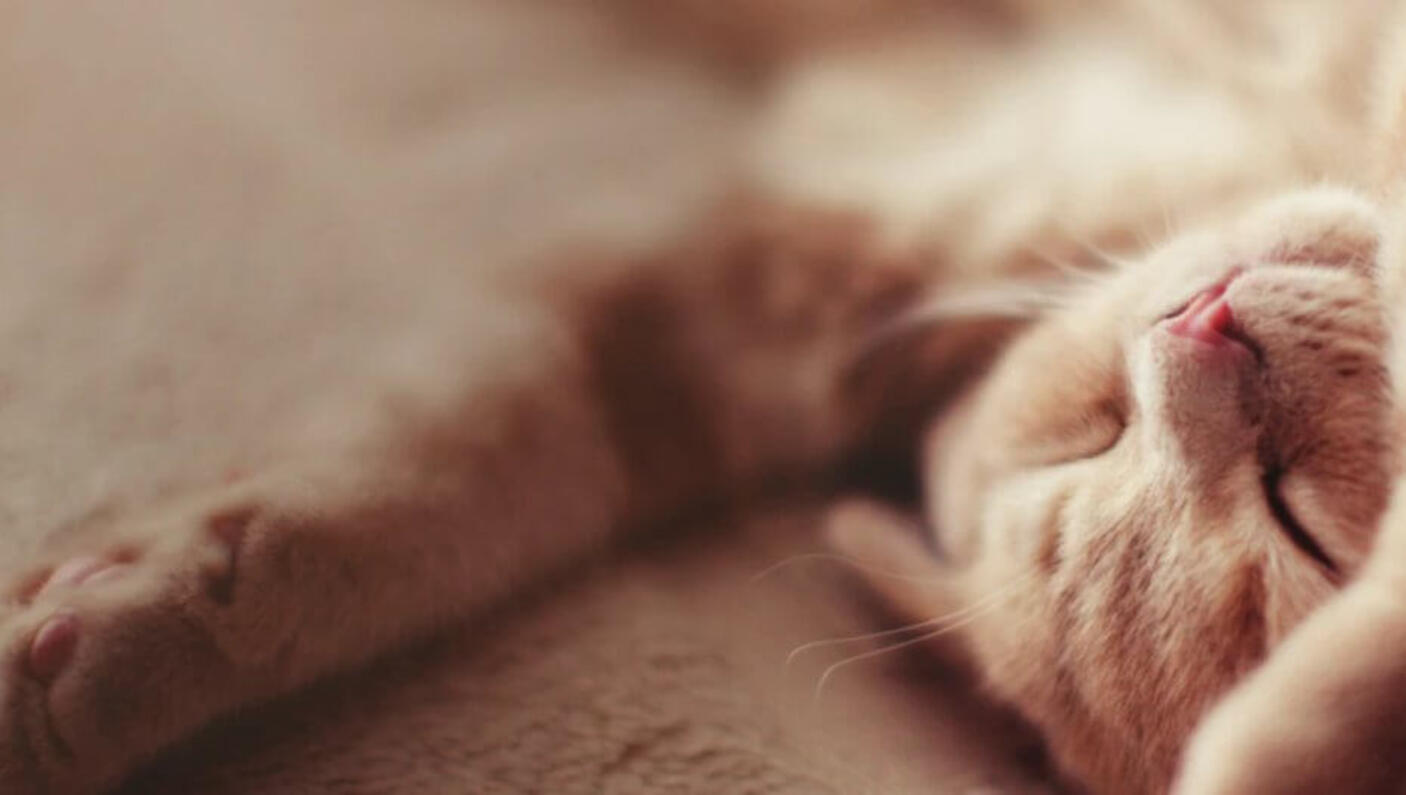
Curious Cat Behaviours
SITTING IN OR ON BOXES
Cats seem to love to sit on or in boxes, no matter where they are. When cats explore, one thing they are looking for is a potential hiding space. The experience of jumping and sliding into a box may resonate with their instinct to find protected spaces out in the wild where they are able to see their environment without being seen. Providing boxes and other similar spaces for your cat to climb into is an inexpensive way to enrich your home environment. Try hiding toys in these spaces, and always make sure that the environment is safe for your cat and that your cat can easily retrieve the toys from the box.
SITTING ON ELECTRONIC EQUIPMENT
Cats may sit on or near electronics, like computers and TVs, because they’re warm and have stimulating images on their screens. It’s not likely that a cat can see exactly what we see, but the movement on the screen may engage a cat’s natural curiosity. Another reason your cat is sitting on your TV may be that she wants interaction and attention, and is trying to disrupt the attention you are giving to the device. A good way to test this is to see if she spends as much time with a device when you are not engaging with it.
RUNNING AROUND IN THE MIDDLE OF THE NIGHT
Since cats are nocturnal, it’s natural that they will be more active at night. Since we’re often not home during the day, they spend a lot of that time sleeping. You can help increase your cat’s activity level during the day by providing her with engaging feeding toys or by establishing a playtime routine before you leave the house and after you return. Before you go to bed, play with your cats to help them expend energy, so they can get more rest at night. A feeding routine that supplies cats with more energy during the day instead of at night might also help.
STEALING
Some cats steal almost any object they can get their paws on. If your cat receives attention from you for stealing things – even if it’s negative attention – it may teach her to continue doing it. Another possibility is that it’s a form of play. If you think this is the case, try providing something else for your cat to do, like feeding puzzles, toys to play with, or, even better, establish a playtime routine. This might alleviate any boredom that causes her to get into trouble.
Stealing may also be related to texture. Your cat may enjoy the feel of different textures, and be looking for stimulation in an environment that doesn’t provide enough enrichment.
Another possibility is that your cat is experiencing stress and is stealing things that help her calm down. Behaviours like wool-sucking, for example, have been observed in some cats and are suspected to calm them down.
If you believe your cat’s stealing has become compulsive consult a cat behaviourist or veterinarian.
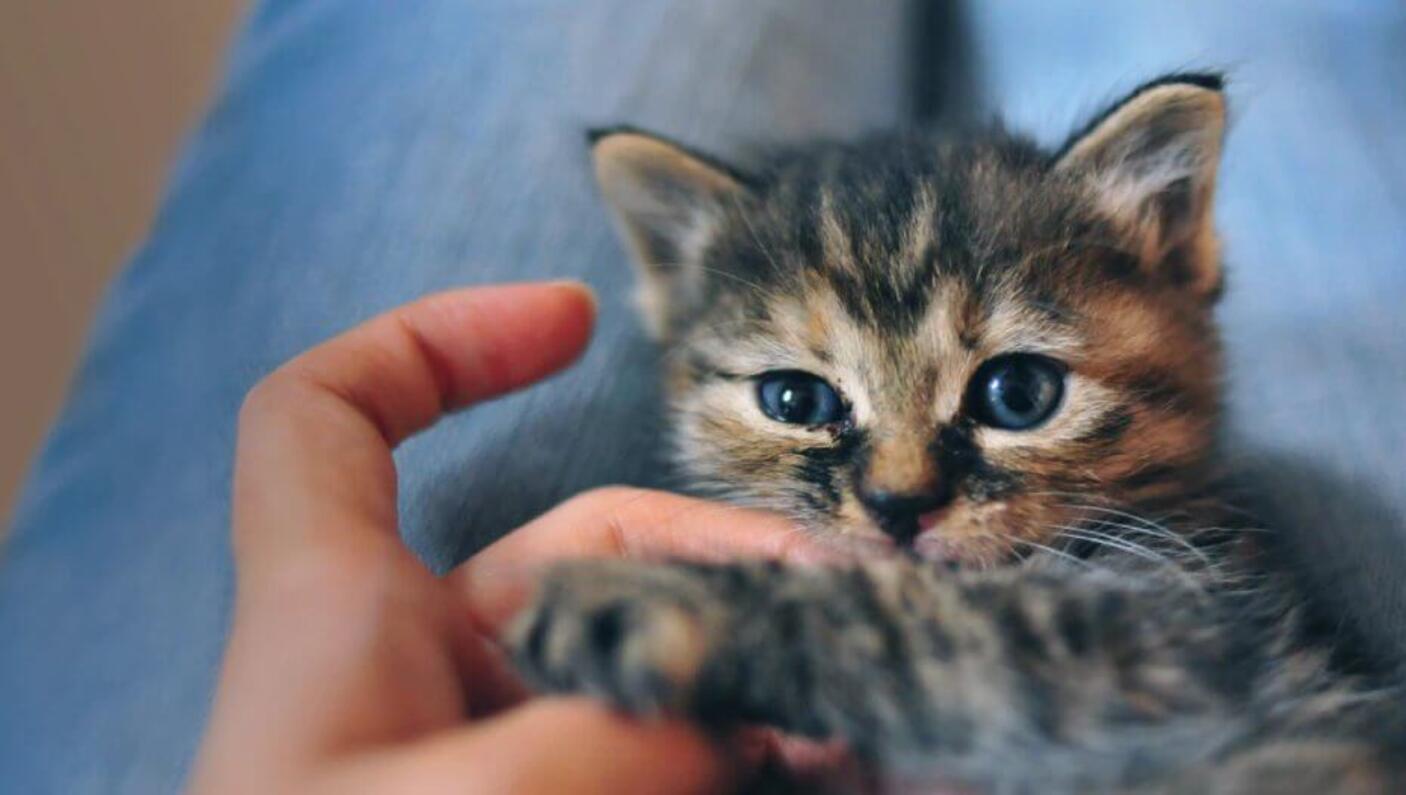
ATTRACTION TO WATER
Many cats love water, although they don’t respond to it the same way dogs do. Cats prefer to approach water on their own terms, and often dislike having it imposed on them. When it comes to drinking water, cats are often more attracted to running water or droplets of water because that’s one way they interact with it in nature. Still water in a bowl is less likely to gain their attention since they can’t smell it or see it as well. If you’re worried about your cat being properly hydrated, try experimenting with ways to give her access to running or dripping water.
Separation Anxiety
Identifying separation anxiety in kittens can be harder than in dogs. Teaching your kitten to be comfortable alone will make both of you happy.
Leaving kittens home alone
Separation anxiety in any animal implies a lack of self-confidence and over-dependence on others.
Kittens with separation anxiety don’t howl and bay like dogs or chew on doors and windowsills in frantic attempts to escape. Their misery is far less obvious. A good clue to tell if your kitten is suffering from separation anxiety is if she’s urinating inappropriately inside your house.
It’s best to train kittens to be alone from an early age. Find a room that you can kitten proof, provide a litter box, food and water and leave them in there for short periods of time.
If they do well in there, gradually leave them for longer periods of time until you are comfortable leaving them home alone.

